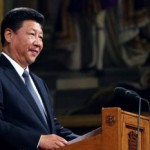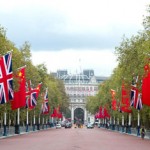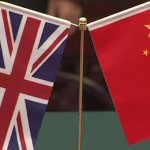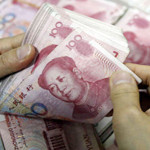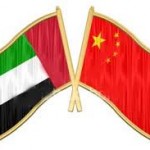Sydney Yuan Hub Seen Saving Importers 7% in Trading: Currencies

Australian importers are in line for a windfall as speculation grows that Chinese President Xi Jinping will use his visit to the country this week to anoint Sydney as a yuan trading center.
The ability to exchange Australian dollars directly into yuan, rather than first converting them into the U.S. currency, will save companies as much as 7 percent on deals with China, according to HSBC Holdings Plc. Chinese investment into Australia has the potential to increase seven times to almost $300 billion by 2020 through the yuan hub and measures such as the trade accord, Westpac Banking Corp. estimates.
“We anticipate that we will see more financial activity in RMB as liquidity increases and the market embraces the benefits of dealing directly with a clearing bank in Sydney,” Rob Whitfield, chief executive at Westpac Institutional Bank, said in a statement today. “We are reaching a tipping point as customers across Asia, New Zealand and Australia are increasingly seeking more renminbiproducts and services.”
China is Australia’s biggest trading partner, supplying 20 percent of the nation’s $256 billion ofimports and buying more than 35 percent of its exports last year, based on data from theInternational Monetary Fund. Sydney follows cities from London to Singapore that have established centers for dealing the yuan, or renminbi as it’s also known, which in 2013 surpassed the euro as the most widely used currency in trade finance after the U.S. dollar.
Investment Quota
Australia and China designated an official yuan clearing bank in Sydney, according to a statement from the Australian government today. China also announced that Australia will be granted an initial quota of 50 billion yuan ($8.2 billion) under the RMB Qualified Foreign Institutional Investor program, which will allow Australian financial institutions to invest in China’s domestic bond and equity markets using yuan.
Prime Minister Tony Abbott called the conclusion of negotiations on the trade accord a “historic day” and Xi told federal parliament in Canberra that the agreement will strengthen relations and help diversify business ties.
Trading patterns in currencies show Australia has more to gain than most other developed economies from an accord on the yuan.
Rising Correlation
The correlation between the so-called Aussie-U.S. dollar exchange rate and the dollar-yuan rate is the highest after the yen among the Group of 10 currencies, data compiled by Bloomberg show. The relationship has increased to 0.91, from about zero two years ago, as Australia deepened its trading ties with the world’s second-largest economy.
A figure of 1 would mean the two were moving in lockstep; minus 1 would mean they were moving in opposite directions.
“If an importer in Australia is willing to settle in renminbi, they will strengthen their relationship with the Chinese supplier and get greater transparency on pricing,” Vina Cheung, who heads a unit working on the internationalization of the yuan at HSBC in Hong Kong, said Nov. 13.
“Direct conversion between the local currency and renminbi helps with funding costs when it comes to trade settlements,” she said.
China, whose hunger for raw materials fed Australia’s record mining boom in recent years, is also the biggest source of goods imported by the South Pacific nation.
Chinese Imports
Australia boosted imports of Chinese products by 14 percent to a record A$4.8 billion ($4.2 billion) in September, with its biggest purchases comprising electronics, toys and clothing. Chinese buyers are fueling a jump in Australian house prices, overtaking Americans to become the biggest purchasers of real estate in the year through June 2013, official data show.
For China, the deal will help in its efforts to bolster the yuan as a currency of global trade. It has signed agreements with Hong Kong, Taipei, Singapore, Paris and Seoul, and Frankfurt starts clearing trades in the Chinese currency today.
Part of China’s plan to burnish the yuan’s image has involved loosening its grip on the exchange rate. That helped the yuan to become the only currency to strengthen versus the U.S. dollar since mid-year, climbing 1.2 percent and extending its more than 10 percent advance over the past five years.
The Australian dollar bought 5.36 yuan at 9:10 in London, while the U.S. currency traded at 6.1270 yuan.
Growing Role
The yuan grew to become the ninth most-traded currency as of April 2013, with 2.2 percent of global foreign-exchange deals, from a negligible showing in 2001, according to the latest triennial survey by the Bank for International Settlements in Basel, Switzerland.
The Aussie’s status increased in step with the yuan’s, and accounted for 8.6 percent of currency deals last year, twice the figure in 2001.
Yuan trades may jump to $262 billion a day in 2018, from $120 billion in the BIS survey, Westpac estimates. About 15 percent of all exchange-rate transactions will go through China by 2030, the Sydney-based lender predicts. That would still be less than London’s 40 percent share and the U.S.’s 18 percent in the 2013 BIS survey.
The yuan’s role is also limited for now by the prevalence of the U.S. dollar as the currency of choice for pricing raw materials.
Yuan Settlement
“Australia’s trade numbers overstate the immediate benefits of direct yuan settlement because much of the materials involved are commodities and those are priced in U.S. dollars,” said Daniel Been, a Sydney-based senior foreign-exchange strategist at Australia & New Zealand Banking Group Ltd. “As the yuan becomes more used in international trade, then having a hub set to facilitate that will be of enormous benefit for Australian companies.”
The currency pact and other accords would give Australia the chance to offer financial services to China businesses and investors, according to Westpac and HSBC. That may lead to yuan-denominated, or dim sum, bonds being sold to Australian investors.
“A currency hub will be very beneficial for the Australian banking sector,” Sean Keane, an Auckland-based analyst at Triple T Consulting, said by phone on Nov. 13. “Exposure to China has been growing and that’s been a very positive development for Australia. From China’s point of view, it would remove part of the world’s reliance on the U.S. dollar, and that’s something the authorities have been pursuing.”
Source: Bloomberg – Sydney Yuan Hub Seen Saving Importers 7% in Trading: Currencies









